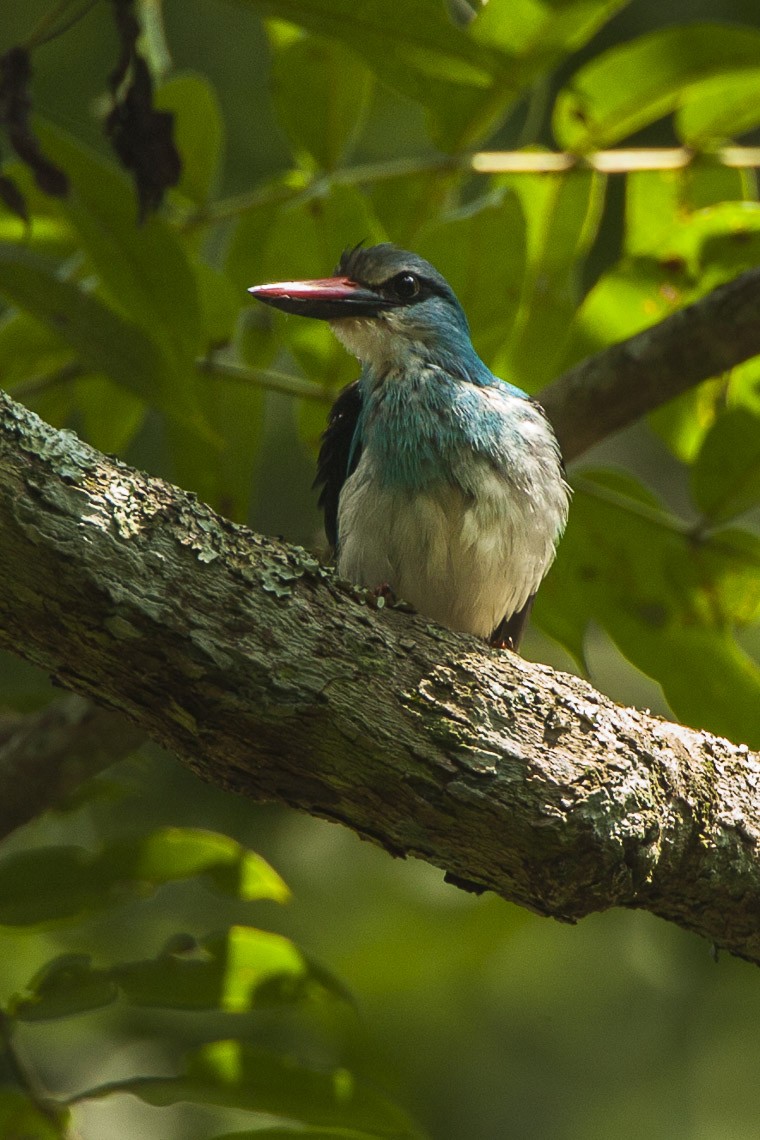Blue-breasted Kingfisher
A species of Typical Woodland Kingfishers Scientific name : Halcyon malimbica Genus : Typical Woodland Kingfishers
Blue-breasted Kingfisher, A species of Typical Woodland Kingfishers
Botanical name: Halcyon malimbica
Genus: Typical Woodland Kingfishers
Content
Description General Info
 Photo By Francesco Veronesi , used under CC-BY-SA-2.0 /Cropped and compressed from original
Photo By Francesco Veronesi , used under CC-BY-SA-2.0 /Cropped and compressed from original Description
The blue-breasted kingfisher (Halcyon malimbica) is a tree kingfisher widely distributed across Equatorial Africa. This kingfisher is essentially resident, but retreats from drier savanna areas to wetter habitats in the dry season. This is a large kingfisher, 25 cm in length. The adult has a bright blue head, back, wing panel and tail. Its underparts are white, but it has a blue breast band. The shoulders are black. The flight of the blue-breasted kingfisher is rapid and direct. The large bill has a red upper mandible and black lower mandible. The legs are bright red. Sexes are similar, but juveniles are duller than adults. The call of this noisy kingfisher is a whistled pu-pu-pu-pu-ku-ku-ku-ku. The blue-breasted kingfisher is a species of a variety of well-wooded habitats. It perches quietly in deep shade whilst seeking food. It is territorial but wary. This species mainly hunts large insects, arthropods, fish and frogs, but will also eat the fruit of the Oil Palm. It has a striking display in which the wings are spread to show the white linings. The nest is a hole in a tree termite nest. A single clutch of two round white eggs is typical. One place that it lives in is in Liberia. 
Size
25 cm
Nest Placement
Tree
Feeding Habits
Blue-breasted Kingfisher's diet mainly comprises invertebrates like cockroaches and beetles, alongside fish, amphibians, and sometimes small mammals. It forages from perches, swooping to catch prey on the ground, sometimes using hard surfaces to beat its catch. It also feeds on fruits like oil palm. A unique behavior is using rocks as anvils to smash snail and crab shells.
Habitat
The blue-breasted Kingfisher primarily inhabits dense rainforests, gallery forests adjacent to streams in savannas, secondary growth forests, mangroves, and riverine woodlands. It is also found in thick savanna woodlands, particularly those dominated by the Anogeissus leiocarpus species, as well as in isolated forest patches within savanna regions.
Dite type
Piscivorous
General Info
Feeding Habits
Bird food type
Species Status
Not globally threatened.